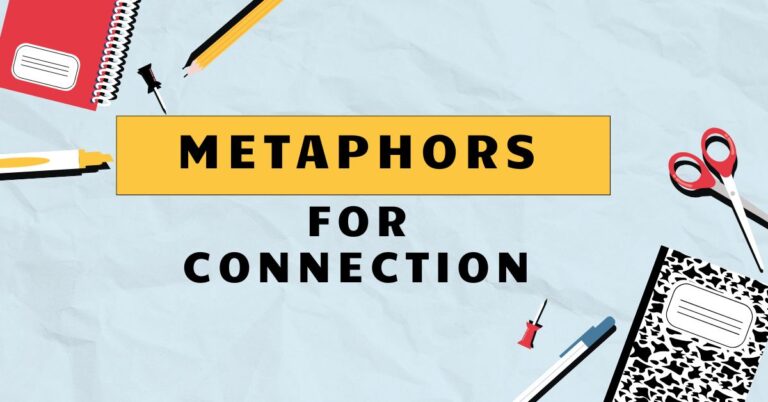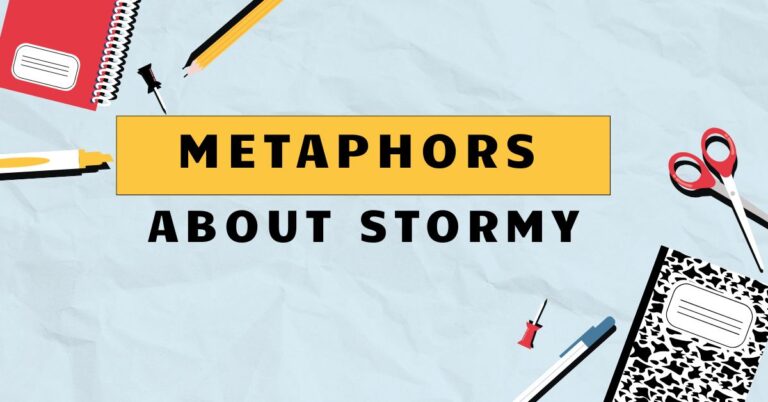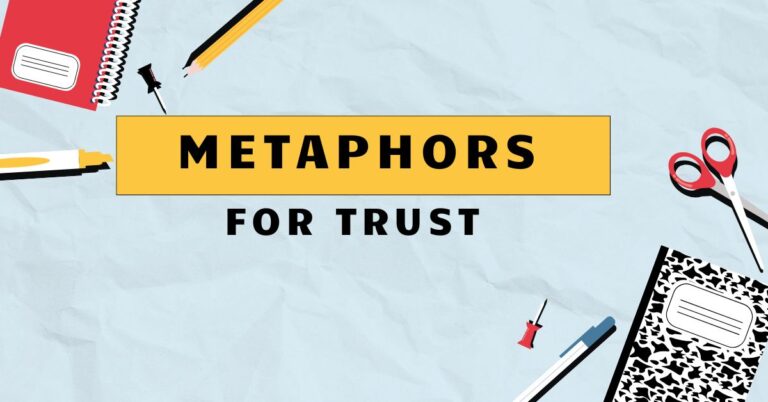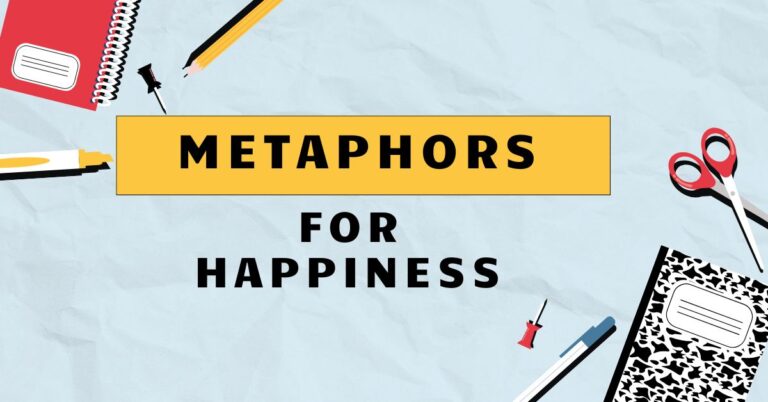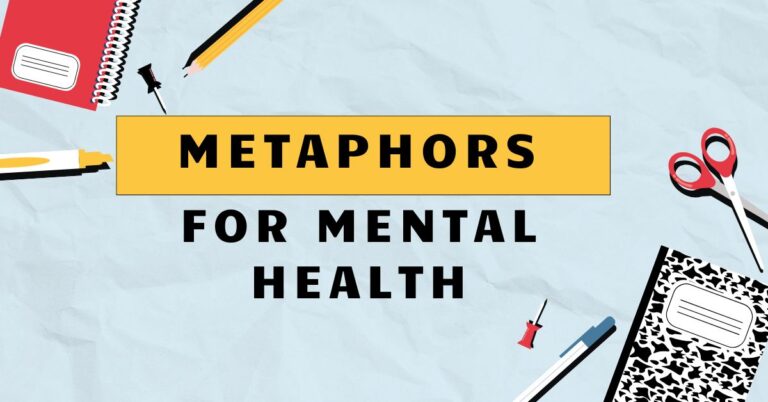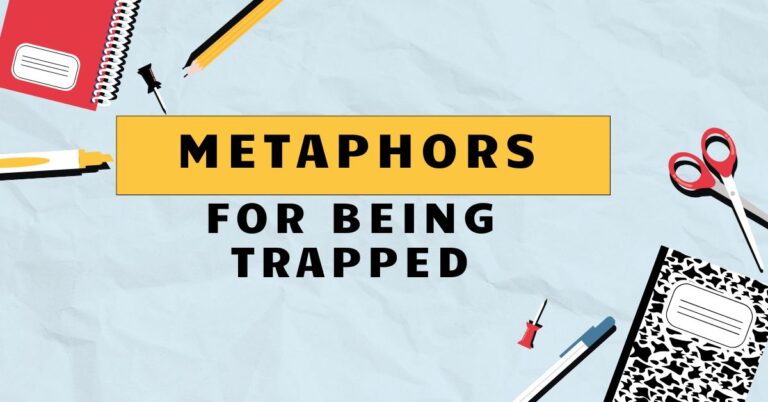51 Metaphors for Motivation: Igniting Your Inner Drive
Motivation is a powerful force that propels us towards achieving our goals. Often, we use metaphors to understand and express this force.
Metaphors for motivation aren’t just figures of speech; they are cognitive tools that help us visualize, internalize, and communicate the abstract concept of motivation. Understanding these metaphors can provide deeper insights into our own drives and the drives of others, enhancing communication and fostering a more motivated mindset.
This article explores the rich landscape of motivational metaphors, providing examples, usage rules, and practical exercises to help you harness their power.
Table of Contents
- Introduction
- Definition of Metaphors for Motivation
- Structural Breakdown
- Types and Categories of Motivational Metaphors
- Examples of Metaphors for Motivation
- Usage Rules for Metaphors for Motivation
- Common Mistakes When Using Motivational Metaphors
- Practice Exercises
- Advanced Topics
- Frequently Asked Questions
- Conclusion
Definition of Metaphors for Motivation
A metaphor is a figure of speech that directly compares two unrelated things, asserting that one thingisanother to highlight a shared quality or characteristic. Unlike similes, which use “like” or “as” to make comparisons, metaphors create a more implicit and powerful connection.
In the context of motivation, metaphors are used to describe the abstract concept of drive, ambition, and purpose in more concrete and relatable terms.
Motivational metaphors function by mapping characteristics from a source domain (e.g., a journey, fire) onto the target domain of motivation. This mapping allows us to understand motivation through the lens of something more tangible and familiar.
The primary function of these metaphors is to make the idea of motivation more vivid, relatable, and actionable.
These metaphors can be found in various contexts, including:
* Everyday language: Phrases like “igniting a passion” or “climbing the ladder of success.”
* Literature and poetry: Used to evoke emotions and create a deeper understanding of characters’ motivations.
* Business and leadership: Employed to inspire teams, set goals, and overcome challenges.
* Personal development: Utilized to cultivate a positive mindset and maintain momentum.
Structural Breakdown
A metaphor consists of two key elements: thetenorand thevehicle. The tenor is the subject to which metaphorical attributes are ascribed.
In the case of motivational metaphors, the tenor is always ‘motivation’ itself, or a related concept such as ambition, drive, or purpose. The vehicle is the object or concept whose attributes are borrowed to describe the tenor.
A vehicle can be anything from a physical process like fire to a journey or a structure.
The effectiveness of a metaphor depends on the strength and relevance of the connection between the tenor and the vehicle. A good motivational metaphor should resonate with the audience, creating a clear and compelling image that enhances understanding and inspires action.
The structural relationship is often implicit, but can be understood as “Motivation is [vehicle]”. For example, in the metaphor “Motivation is a fire,” motivation (the tenor) is being described as a fire (the vehicle).
The shared attribute is the ability to provide energy and warmth (in the literal sense for fire, and in a figurative sense for motivation).
The structural breakdown can also involve understanding the ground of the metaphor, which is the shared characteristics or qualities between the tenor and the vehicle that make the comparison meaningful. Identifying the ground is crucial for interpreting the metaphor correctly and appreciating its full impact.
Types and Categories of Motivational Metaphors
Motivational metaphors can be categorized based on the type of imagery or concept they draw upon. Here are some common categories:
Journey Metaphors
Journey metaphors frame motivation as a path, voyage, or quest. They emphasize the process of moving towards a goal, overcoming obstacles, and the importance of perseverance.
These metaphors often involve concepts like direction, progress, and milestones.
Fire Metaphors
Fire metaphors associate motivation with the qualities of fire, such as passion, intensity, and energy. They highlight the idea of igniting a spark, fueling ambition, and the potential for both creation and destruction.
These metaphors often involve terms like burning, blazing, and kindling.
Weight Metaphors
These metaphors portray motivation or lack thereof as a burden or a force that pulls one down or lifts one up. They often involve the concepts of overcoming obstacles, carrying responsibilities, or feeling weighed down by doubts and fears.
Light Metaphors
Light metaphors associate motivation with clarity, understanding, and hope. They often involve concepts like illumination, guidance, and the dispelling of darkness or confusion.
These metaphors can be particularly effective in conveying a sense of purpose and direction.
Growth Metaphors
Growth metaphors depict motivation as a process of development, expansion, and flourishing. They emphasize the importance of nurturing potential, overcoming challenges, and reaching maturity.
These metaphors often draw upon imagery from nature, such as seeds, roots, and blossoming.
Battle Metaphors
Battle metaphors frame motivation as a struggle, fight, or competition. They highlight the need for courage, resilience, and strategic thinking in achieving goals.
These metaphors often involve terms like combat, victory, and defeat.
Energy Metaphors
These metaphors relate motivation to the concept of energy, either gaining it, losing it, or directing it. They can involve images of batteries, dynamos, or flowing currents, emphasizing the dynamic and renewable nature of motivation.
Building Metaphors
Building metaphors represent motivation as the process of constructing something, whether it’s a career, a relationship, or a personal skill. These metaphors emphasize planning, effort, and the gradual accumulation of progress over time.
They often use terms like foundation, structure, and architecture.
Examples of Metaphors for Motivation
The following tables provide examples of each type of motivational metaphor, illustrating their usage in various contexts.
Journey Metaphor Examples
The journey metaphor is a powerful tool for visualizing progress and overcoming obstacles. Here are some examples:
| Metaphor | Explanation |
|---|---|
| “The road to success is paved with hard work.” | Success is portrayed as a destination reached by traveling a road that requires effort. |
| “He’s on the right track.” | His actions align with a path leading to his goals. |
| “She’s navigating the challenges of her career.” | Her career is like a sea voyage, requiring skill and strategy to overcome difficulties. |
| “They’ve reached a crossroads in their decision-making process.” | A point of significant choice where different paths diverge. |
| “He stumbled upon a new opportunity.” | Finding a new opportunity is like accidentally tripping on something valuable. |
| “She’s charting a new course for her life.” | Planning and directing her future like a navigator charts a sea route. |
| “They’re climbing the ladder of success.” | Achieving higher levels in a career is like climbing a physical ladder. |
| “He got sidetracked from his goals.” | His focus was diverted from the main path leading to his objectives. |
| “She’s forging her own path.” | Creating a unique and independent route to her aspirations. |
| “They’re at a standstill in their progress.” | Their advancement has halted, like a vehicle stuck in traffic. |
| “He’s miles ahead of the competition.” | He is significantly more advanced than his competitors. |
| “She’s on a journey of self-discovery.” | Engaging in a process of learning and understanding oneself better. |
| “They’re mapping out their future.” | Planning and outlining their future steps and goals. |
| “He’s reached the summit of his career.” | Achieved the highest point of his professional achievements. |
| “She’s navigating through uncharted territory.” | Exploring and dealing with unfamiliar and unknown situations. |
| “He’s paving the way for future generations.” | Making it easier for those who follow by removing obstacles and setting precedents. |
| “She’s blazing a trail in her field.” | Being a pioneer and innovator in her area of expertise. |
| “They’re lost in the wilderness of their career.” | Feeling confused and without direction in their professional lives. |
| “He’s steering the ship of his company.” | Guiding and directing his company towards its goals. |
| “She’s at the starting line of her new venture.” | Beginning a new project or business. |
| “They’re on a long and winding road to recovery.” | Facing a difficult and lengthy process of healing or improvement. |
| “He’s taking the scenic route to success.” | Choosing a more enjoyable but possibly slower path to achieving his goals. |
| “She’s hit a roadblock in her project.” | Encountering an obstacle that is preventing progress. |
| “They’re traveling light on their journey to success.” | Avoiding unnecessary burdens and distractions to achieve their goals more easily. |
| “He’s following the footsteps of his mentor.” | Learning from and emulating the actions of someone he admires. |
| “She’s leading the way for others to follow.” | Setting an example and guiding others through her actions. |
Fire Metaphor Examples
Fire metaphors capture the intensity and transformative power of motivation. Consider these examples:
| Metaphor | Explanation |
|---|---|
| “His passion is burning brightly.” | His enthusiasm and dedication are strong and evident. |
| “She’s igniting a fire in her team.” | She’s inspiring and motivating her team members. |
| “The flame of his ambition never died.” | His desire to achieve his goals remained constant. |
| “Her motivation was fueled by her desire to succeed.” | Her ambition was strengthened by her strong wish to achieve success. |
| “He’s burning the midnight oil to finish the project.” | Working late into the night with great effort and dedication. |
| “She’s stoking the flames of innovation.” | Encouraging and promoting new ideas and creativity. |
| “They’re fanning the embers of their past successes.” | Reviving and building upon their previous achievements. |
| “His enthusiasm is contagious; it’s like wildfire.” | His passion spreads quickly and easily to others. |
| “She’s a powerhouse, a burning furnace of ideas.” | She is an energetic and creative individual. |
| “They’re extinguishing the fire of dissent.” | Suppressing or eliminating disagreement and opposition. |
| “He’s playing with fire by taking such risks.” | Engaging in dangerous or reckless behavior. |
| “Her spirit is unquenchable, like an eternal flame.” | Her determination and passion cannot be diminished. |
| “They’re adding fuel to the fire of their ambition.” | Increasing and intensifying their desire to achieve their goals. |
| “He’s a firebrand, always stirring up excitement.” | He is someone who provokes and inspires strong emotions. |
| “She’s kindling the spark of creativity in her students.” | Inspiring and encouraging creative thinking in her students. |
| “He has a fire in his belly to succeed.” | He has a strong and intense desire to achieve his goals. |
| “She’s burning bridges with her colleagues.” | Damaging or ending relationships with her coworkers. |
| “They’re walking through fire to achieve their dreams.” | Enduring significant hardships and challenges to reach their goals. |
| “He’s a beacon of light, igniting hope in others.” | He is an inspirational figure who brings hope to those around him. |
| “Her passion is a raging inferno.” | Her enthusiasm is extremely intense and powerful. |
| “They’re trying to put out the fire of controversy.” | Attempting to suppress or resolve a contentious issue. |
| “He’s a burning example of dedication and hard work.” | He is a clear and inspiring illustration of commitment and effort. |
| “She’s keeping the home fires burning.” | Maintaining a sense of warmth, comfort, and stability at home. |
| “They’re adding fuel to the flames of their rivalry.” | Intensifying the competition and animosity between them. |
| “He’s a hotshot, burning up the charts.” | He is extremely successful and rapidly rising in his field. |
| “She’s a spark of inspiration to her team.” | She is a source of creativity and motivation for her colleagues. |
Weight Metaphor Examples
Weight metaphors illustrate the burden or support that motivation can represent:
| Metaphor | Explanation |
|---|---|
| “The weight of responsibility was crushing him.” | The burden of his duties was overwhelming. |
| “She felt lifted by the support of her friends.” | The encouragement from her friends made her feel stronger. |
| “His doubts were a heavy burden to bear.” | His uncertainties were a significant source of distress. |
| “She shrugged off her worries and moved forward.” | She dismissed her concerns and continued her progress. |
| “He’s carrying the weight of the world on his shoulders.” | He feels responsible for many problems and challenges. |
| “She’s burdened by her past mistakes.” | Her past errors continue to weigh heavily on her. |
| “They’re shouldering the responsibility for the project’s success.” | Taking on the main responsibility for ensuring the project is successful. |
| “He felt weighed down by the expectations of others.” | He felt pressured by what others expected of him. |
| “She’s shedding the baggage of her past.” | Releasing herself from the negative influences of her past experiences. |
| “They’re lightening the load by delegating tasks.” | Reducing the burden by distributing responsibilities to others. |
| “He’s struggling under the weight of his workload.” | He is having difficulty managing his heavy workload. |
| “She felt uplifted by the positive feedback she received.” | She felt encouraged and motivated by the praise she was given. |
| “They’re weighed down by bureaucracy and red tape.” | Hindered by excessive rules and regulations. |
| “He’s carrying the torch for his organization.” | He is upholding the values and traditions of his organization. |
| “She’s burdened with the task of managing the crisis.” | She is heavily responsible for handling the difficult situation. |
| “He’s feeling the pressure of the deadline.” | He is experiencing stress due to the approaching deadline. |
| “She’s bearing the brunt of the criticism.” | She is receiving the main force of the negative feedback. |
| “They’re unburdening themselves by sharing their problems.” | Relieving themselves of stress by talking about their issues. |
| “He’s lifting the spirits of his team.” | Encouraging and motivating his team members. |
| “She’s feeling the weight of expectation from her family.” | She feels pressured by what her family expects of her. |
| “They’re carrying the hopes of the community on their shoulders.” | They feel responsible for fulfilling the aspirations of the community. |
| “He’s weighed down by the knowledge of his mistakes.” | He is burdened by the awareness of his past errors. |
| “She’s shouldering the financial responsibilities of her family.” | Taking on the primary financial obligations for her family. |
| “They’re lightening their mental load by practicing mindfulness.” | Reducing their mental stress by focusing on the present moment. |
| “He’s burdened by the legacy of his predecessors.” | He feels the weight of the achievements and expectations of those who came before him. |
| “She’s lifting the veil of secrecy surrounding the issue.” | Revealing and making public information that was previously hidden. |
Light Metaphor Examples
| Metaphor | Explanation |
|---|---|
| “Her ideas illuminated the path forward.” | Her insights clarified the direction to take. |
| “He’s a beacon of hope for the community.” | He provides guidance and inspiration. |
| “She shone a light on the problem.” | She clarified and explained the issue. |
| “He’s a guiding light for his students.” | He provides direction and inspiration to his students. |
| “She’s shedding light on the truth.” | Revealing and clarifying the facts. |
| “They’re walking in the light of their principles.” | Guided by their moral and ethical beliefs. |
| “He’s bringing clarity to the situation.” | Making the situation clearer and easier to understand. |
| “She’s a ray of sunshine in their lives.” | She brings joy and positivity to those around her. |
| “They’re illuminating the path for future generations.” | Making it easier for those who follow by providing guidance and knowledge. |
| “He’s a bright spark of innovation.” | He is a source of creative and new ideas. |
| “She’s casting light on the hidden aspects of the issue.” | Revealing and clarifying the previously unknown details. |
| “They’re walking out of the darkness into the light.” | Moving from a state of ignorance or despair to one of knowledge and hope. |
| “He’s a luminary in his field.” | He is a distinguished and respected expert in his area of expertise. |
| “She’s shining a spotlight on the problem.” | Drawing attention to and highlighting the issue. |
| “They’re bringing the issue to light.” | Making the issue known and public. |
| “He’s a guiding star for young entrepreneurs.” | He is a role model and mentor for aspiring business owners. |
| “She’s a beacon of excellence in her profession.” | She is an outstanding and exemplary professional. |
| “They’re shedding light on the importance of mental health.” | Raising awareness and understanding of mental health issues. |
| “He’s a bright light in a dark world.” | He brings hope and positivity to a challenging environment. |
| “She’s a shining example of resilience.” | She is a clear demonstration of the ability to recover quickly from difficulties. |
| “They’re illuminating the path to peace.” | Providing guidance and clarity on how to achieve peace. |
| “He’s a lighthouse in the storm of challenges.” | He is a source of stability and guidance during difficult times. |
| “She’s bringing enlightenment to the discussion.” | Providing deeper understanding and clarity to the conversation. |
| “They’re shining a light on the importance of education.” | Highlighting and emphasizing the value of education. |
| “He’s a bright spark of creativity in the company.” | He is a source of innovative and imaginative ideas. |
Growth Metaphor Examples
| Metaphor | Explanation |
|---|---|
| “His ideas blossomed into a successful business.” | His concepts developed and flourished into a thriving enterprise. |
| “She’s nurturing her talent.” | She’s developing and cultivating her skills. |
| “They’re planting the seeds of change.” | They’re initiating actions that will lead to future transformations. |
| “He’s cultivating a positive mindset.” | He is developing and fostering a positive attitude. |
| “She’s growing her network of contacts.” | She is expanding and developing her professional relationships. |
| “They’re pruning away unnecessary expenses.” | They are eliminating and cutting back on non-essential costs. |
| “He’s reaping the rewards of his hard work.” | He is enjoying the benefits and outcomes of his efforts. |
| “She’s sowing the seeds of her future success.” | She is taking actions now that will lead to her future achievements. |
| “They’re nurturing the growth of their company.” | They are fostering and supporting the development of their business. |
| “He’s budding with new ideas.” | He is full of fresh and emerging concepts. |
| “She’s blossoming into a confident leader.” | She is developing and flourishing into a capable and assured leader. |
| “They’re cultivating a culture of innovation.” | They are fostering and promoting a workplace environment that encourages new ideas. |
| “He’s planting the seeds of friendship.” | He is initiating actions that will lead to the development of friendships. |
| “She’s nurturing the growth of her students.” | She is fostering and supporting the development of her students. |
| “They’re pruning away bad habits.” | They are eliminating and cutting back on negative behaviors. |
| “He’s reaping what he sowed.” | He is experiencing the consequences of his actions. |
| “She’s a late bloomer in her career.” | She achieved success later in her professional life. |
| “They’re cultivating a garden of opportunity.” | They are creating an environment where opportunities can flourish. |
| “He’s a fertile ground for new ideas.” | He is receptive and conducive to the development of new concepts. |
| “She’s blossoming into her full potential.” | She is developing and realizing her complete abilities. |
| “They’re cultivating a sense of community.” | They are fostering and promoting a feeling of fellowship and belonging. |
| “He’s planting the seeds of hope in the community.” | He is initiating actions that will bring hope to the community. |
| “She’s nurturing the creativity of her children.” | She is fostering and supporting the creative development of her children. |
| “They’re pruning away inefficiencies in the process.” | They are eliminating and cutting back on wasteful practices. |
| “He’s reaping the benefits of his investments.” | He is enjoying the profits and advantages of his financial investments. |
Battle Metaphor Examples
| Metaphor | Explanation |
|---|---|
| “She’s fighting for her dreams.” | She’s battling obstacles to achieve her aspirations. |
| “He conquered his fears.” | He overcame his anxieties. |
| “They’re locked in a battle for market share.” | They’re intensely competing for a larger portion of the market. |
| “She’s waging war against poverty.” | She’s campaigning vigorously to eliminate poverty. |
| “He’s a warrior in the boardroom.” | He is a strong and assertive negotiator in business meetings. |
| “She’s battling against the odds.” | She is facing significant challenges and difficulties. |
| “They’re locked in a struggle for power.” | They are intensely competing for control and influence. |
| “He’s fighting an uphill battle.” | He is facing a difficult and challenging situation. |
| “She’s a champion of human rights.” | She is a strong advocate and defender of human rights. |
| “They’re engaged in a war of words.” | They are exchanging heated and argumentative statements. |
| “He’s battling his inner demons.” | He is struggling with his personal challenges and weaknesses. |
| “She’s a fearless warrior in the fight for justice.” | She is a courageous and determined advocate for justice. |
| “They’re locked in a battle of wills.” | They are intensely competing to assert their dominance and control. |
| “He’s fighting tooth and nail to succeed.” | He is making every possible effort to achieve his goals. |
| “She’s a soldier in the fight against climate change.” | She is actively working to combat climate change. |
| “They’re locked in a battle against time.” | They are racing against a limited amount of time to complete a task. |
| “He’s fighting for his reputation.” | He is working to protect and defend his good name. |
| “She’s a gladiator in the corporate arena.” | She is a strong and competitive player in the business world. |
| “They’re engaged in a battle of wits.” | They are competing to demonstrate their intelligence and cleverness. |
| “He’s fighting to keep his head above water.” | He is struggling to survive and stay afloat in a difficult situation. |
| “She’s a warrior for social justice.” | She is a strong advocate and defender of social justice. |
| “They’re locked in a battle for survival.” | They are intensely competing to ensure their continued existence. |
| “He’s fighting against the tide of public opinion.” | He is opposing the prevailing views and attitudes of the public. |
| “She’s a champion of the underdog.” | She is a strong supporter and advocate for those who are disadvantaged. |
Energy Metaphor Examples
| Metaphor | Explanation |
|---|---|
| “He’s a dynamo of energy.” | He’s full of vitality and drive. |
| “Her enthusiasm is infectious.” | Her passion spreads easily to others. |
| “They’re recharging their batteries after a long week.” | They are resting and recovering their energy. |
| “He’s running on fumes.” | He’s operating with very little energy or resources. |
| “She’s a powerhouse of creativity.” | She is a strong source of innovative ideas. |
| “They’re channeling their energy into the project.” | They are focusing their efforts and resources on the project. |
| “He’s draining my energy.” | He is causing me to feel tired and depleted. |
| “She’s a source of inspiration and vitality.” | She provides motivation and energy to others. |
| “They’re revitalizing their team with new strategies.” | They are renewing and energizing their team with fresh approaches. |
| “He’s brimming with energy and enthusiasm.” | He is full of vitality and eagerness. |
| “She’s a spark of creativity in the company.” | She is a source of innovative ideas and inspiration. |
| “They’re fueling their success with hard work.” | They are powering their achievements with diligent effort. |
| “He’s running out of steam.” | He is losing his energy and motivation. |
| “She’s a fountain of energy and positivity.” | She is a continuous source of vitality and optimism. |
| “They’re conserving their energy for the final push.” | They are saving their strength and resources for the last effort. |
| “He’s a bundle of energy.” | |
| “She’s zapping the energy out of the room.” | She is creating a negative and draining atmosphere. |
| “They’re boosting their team’s morale with positive feedback.” | They are increasing their team’s confidence and enthusiasm with praise. |
| “He’s a human battery, always charged and ready to go.” | He is consistently energetic and prepared for action. |
| “She’s channeling her passion into her work.” | She is directing her enthusiasm and drive into her job. |
| “They’re draining the life out of the project with bureaucracy.” | They are diminishing the energy and vitality of the project with excessive rules. |
| “He’s a wellspring of inspiration.” | He is a continuous source of motivation and creativity. |
| “She’s recharging her soul with nature.” | She is renewing her spirit by spending time in natural surroundings. |
| “They’re fueling their creativity with collaboration.” | They are enhancing their innovation by working together. |
Building Metaphor Examples
| Metaphor | Explanation |
|---|---|
| “He’s laying the foundation for his future.” | He’s establishing the groundwork for his future success. |
| “She’s constructing a strong career.” | She’s building a successful and stable professional life. |
| “They’re erecting barriers to success.” | They are creating obstacles that hinder achievement. |
| “He’s building bridges between cultures.” | He is establishing connections and understanding between different cultures. |
| “She’s demolishing old habits.” | She is breaking down and eliminating old, negative behaviors. |
| “They’re reinforcing their team’s strengths.” | They are strengthening and supporting their team’s capabilities. |
| “He’s constructing a network of support.” | He is building a group of people who provide assistance and encouragement. |
| “She’s laying the groundwork for her business.” | She’s establishing the initial steps and preparations for her business. |
| “They’re erecting a monument to their achievements.” | They are creating a lasting symbol of their accomplishments. |
| “He’s building a legacy of excellence.” | He’s creating a lasting reputation for outstanding performance. |
| “She’s constructing a framework for success.” | She’s building a structure and plan for achieving her goals. |
| “They’re demolishing the myth of failure.” | They are disproving and eliminating the false belief in failure. |
| “He’s building a solid reputation.” | He’s creating a strong and positive public image. |
| “She’s laying the foundation for a better world.” | She’s establishing the groundwork for a more improved and equitable society. |
| “They’re erecting a wall of defense against criticism.” | They are creating a barrier to protect themselves from negative feedback. |
| “He’s building a strong foundation of knowledge.” | He’s establishing a solid base of understanding and information. |
| “She’s constructing a framework for innovation.” | She’s building a structure and plan for fostering new ideas. |
| “They’re demolishing the barriers to education.” | They are breaking down and eliminating obstacles to access to education. |
| “He’s building a culture of collaboration.” | He is fostering a workplace environment that encourages teamwork. |
| “She’s laying the groundwork for a sustainable future.” | She’s establishing the initial steps and preparations for a future that can be maintained. |
| “They’re erecting a shield against negativity.” | They are creating a barrier to protect themselves from negative influences. |
| “He’s building a network of professional contacts.” | He’s creating a group of people who can provide support and assistance in his career. |
| “She’s constructing a roadmap for success.” | She’s building a detailed plan and strategy for achieving her goals. |
Usage Rules for Metaphors for Motivation
Using metaphors effectively requires careful consideration of your audience, context, and the specific message you want to convey. Here are some rules to follow:
- Know Your Audience: Consider their background, culture, and level of understanding. A metaphor that resonates with one audience may not work for another.
- Keep it Simple: Avoid overly complex or obscure metaphors that may confuse your audience. The best metaphors are clear and easy to understand.
- Be Consistent: Once you establish a metaphor, stick with it. Mixing metaphors can create confusion and weaken your message.
- Ensure Relevance: The metaphor should be relevant to the topic and context. A random or unrelated metaphor can distract from your message.
- Use Sparingly: Overusing metaphors can make your language sound contrived and insincere. Use them strategically to enhance your message, not to dominate it.
- Test Your Metaphor: If possible, test your metaphor with a small group before using it in a larger setting. This can help you identify any potential issues or misunderstandings.
- Consider the Emotional Impact: Metaphors can evoke strong emotions. Be mindful of the emotional impact of your metaphor and choose one that aligns with your intended message.
Common Mistakes When Using Motivational Metaphors
Even with a good understanding of metaphors, it’s easy to make mistakes in their usage. Here are some common pitfalls to avoid:
- Mixed Metaphors: Combining two or more incompatible metaphors, creating a nonsensical or confusing image. For example: “We need to nip it in the bud and climb the ladder of success.” (combining a growth metaphor with a journey metaphor). “We need to nip it in the bud to ensure our success.”
- Clichés: Overused metaphors that have lost their impact and originality. For example: “Think outside the box.” While understandable, it’s lost its punch. Try: “Let’s explore unconventional solutions.”
- Inappropriate Metaphors: Using metaphors that are offensive, insensitive, or inappropriate for the context. Always consider the potential impact of your words on your audience.
- Overly Complex Metaphors: Using metaphors that are too complicated or abstract for your audience to understand. Keep it simple and relatable.
- Ignoring Cultural Differences: Failing to consider how cultural differences may affect the interpretation of your metaphor. What resonates in one culture may not in another.
- Being Too Literal: Taking a metaphor too literally can lead to misunderstandings and misinterpretations. Remember that metaphors are figurative, not literal, comparisons.
Practice Exercises
To improve your understanding and usage of motivational metaphors, try these exercises:
Advanced Topics
For those looking to deepen their understanding of motivational metaphors, here are some advanced topics to explore:
- Cognitive Linguistics: Explore the role of metaphors in shaping thought and understanding, particularly within the framework of Conceptual Metaphor Theory.
- Rhetorical Analysis: Study how metaphors are used in persuasive communication, including political speeches, marketing campaigns, and leadership addresses.
- Cross-Cultural Metaphors: Investigate how metaphors vary across cultures and how these differences can impact communication and understanding.
- The Neuroscience of Metaphors: Research the neural processes involved in understanding and processing metaphors, shedding light on their cognitive impact.
- Developing Original Metaphors: Learn techniques for creating fresh and impactful metaphors that resonate with your audience and convey your message effectively.
Frequently Asked Questions
Conclusion
Metaphors for motivation are powerful tools that can transform the way we understand and communicate about drive, ambition, and purpose. By mastering the art of using these metaphors, you can inspire yourself and others to achieve their goals, overcome challenges, and unlock their full potential.
Embrace the richness and versatility of motivational metaphors, and watch as they ignite your inner drive and propel you towards success.


